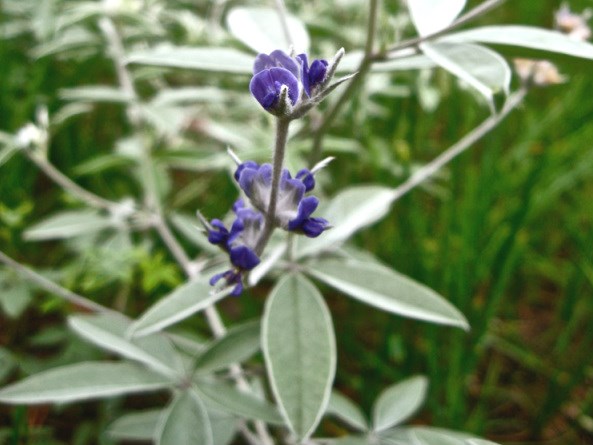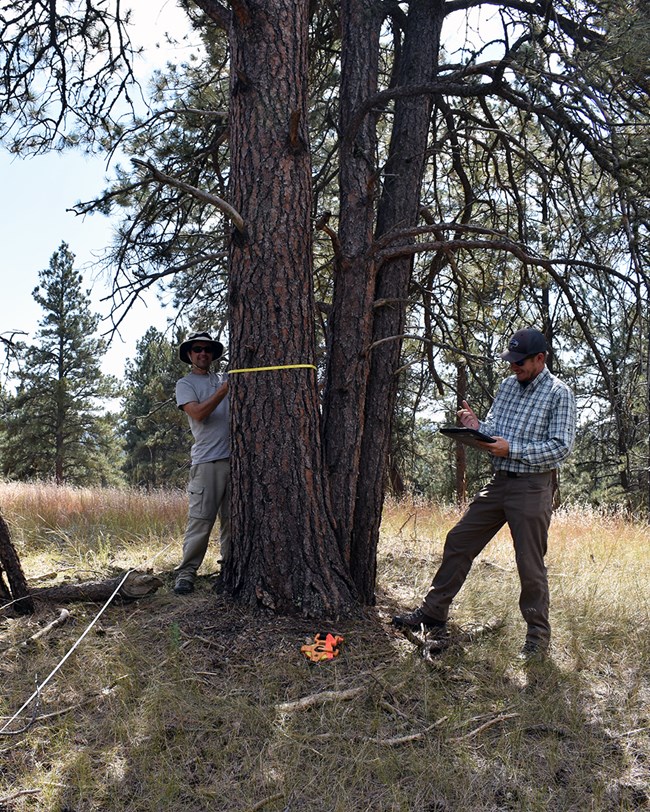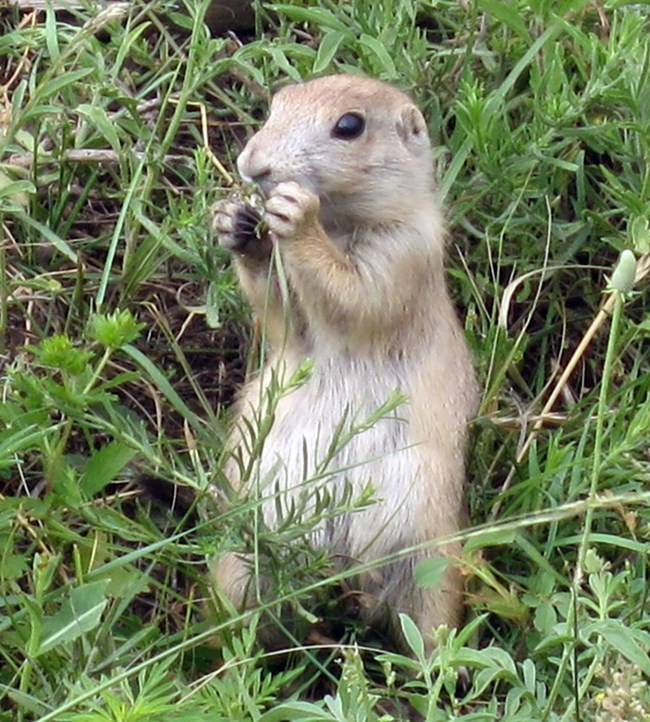Part of a series of articles titled Plant Community Monitoring in Northern Great Plains Network Parks.
Article
Plant Community Monitoring at Devils Tower National Monument

NPS
Overview
The astounding rock monolith at Devils Tower National Monument is what draws most visitors. The park is in northeastern Wyoming on the edge of the Black Hills, an area that contains 1.5 million hectares of ponderosa pine (Pinus ponderosa) forest surrounded by the prairies of western South Dakota and eastern Wyoming. This Black Hills is a unique ecosystem composed of species from the western Rocky Mountains, eastern deciduous forests, and northern boreal forests.
Plants in the park are sensitive to many stressors, including invasive exotic species, habitat fragmentation, river flow management, climate change, and altered fire and grazing patterns. Park management actions, such as prescribed fire, exotic species control, and wildlife management, may also affect plant communities. The Northern Great Plains Inventory and Monitoring Network conducts long-term monitoring of plant communities at Devils Tower National Monument because it helps us better understand the current health of ecosystems and it can provide an early warning of undesirable changes.

NPS

NPS
What We Monitor
The Northern Great Plains Network established monitoring plots in 2011 in the riparian (riverside) area along the Belle Fourche River, and in areas above the floodplains of the river (uplands) throughout the park. A subset of these plots is monitored each year on a rotating basis. At each plot, we record the native and exotic plant species found and the vegetation cover of each species, a measure of how much ground is covered by the plants.
When woody species are present, we collect tree regeneration and tall shrub density data. We map and tag large trees and record their status (live or dead) and condition (leaf-discoloration, insect-damaged, etc.). The NPS Northern Great Plains Fire Ecology Program began plant monitoring on the park in 1998 to evaluate the effectiveness of prescribed burns. In 2011, we combined efforts to continue yearly monitoring with revised methods.
In 2013, we established and surveyed forested plots to better understand the status and trends in forest vegetation specifically. We measured tree stem density, tree diameter, live and dead tree condition, forest fuel loading, cover of exotic species, and disturbance. The same plots were resurveyed in 2018 and will be resampled every five years into the future.

NPS
Plant Communities in the Park
The Devils Tower National Monument species list includes 472 plants. In 2018, 152 unique plant species were found on monitoring plots and over 350 species have been found on plots since 1998. Graminoids (grasses, sedges, and rushes) accounted for most of the vegetation cover, but forbs (flowering plants that are not woody and not a grass or grass-like), shrubs, and subshrubs (low-growing shrubs) are also present. Since 1998, 66 exotic species have been detected; Kentucky bluegrass is the most pervasive exotic. Nine rare species have been detected, including the critically imperiled greater bladder sedge (Carex intumescens).
Based on our 2013 and 2018 forest monitoring, we found that the park's ponderosa pine forests and woodlands are in good condition, but exotic species are widespread and persistent. Tree density and basal area, a measure that looks at number and size of tree trunks, are similar to historic conditions. There was a decrease in total surface fuels from 16.1 tons/acre in 2013 to 12.1 tons/acre in 2018, primarily due to prescribed fires in 2016 and 2017. Surface fuels are still above the desired amounts (8-10 tons/acre) and indicate the need for further treatment. The condition of riparian forests and woodlands in the park is declining due to low survival and low numbers of new cottonwood trees (Populus deltoides).
The park is concerned about the prevalence of exotic species, changes in ponderosa pine density due to historic fire suppression, and the lack of cottonwood regeneration. Continued monitoring will help park staff make well-informed management decisions to address these issues.
More Details
- Ponderosa pine woodlands, mixed-grass prairie, and riparian plant communities at Devils Tower National Monument have a low to moderate number of native plants compared to similar areas nearby. A number of factors can affect how many species are present, including how often fires occur, grazing, and weather fluctuations. This park also has a mixed history of past land-use practices that have affected the current array of plants.
- The most common graminoids were western wheatgrass (Pascopyrum smithii), big bluestem (Andropogon gerardii), green needlegrass (Nassella virdula), and upland sedges (Carex spp.).
- The riparian (riverside) areas have fewer native plants than the uplands areas (areas above the river floodplain) and more exotic species cover, although the exotic, Kentucky bluegrass, has similar cover in both areas.
- There are no significant trends (increases or decreases) in the average number of species found at plots over time.
- There were no relationships between the time since a prescribed burn and the number of native species or total exotic cover, suggesting that prescribed burns have had little effect on these aspects of herbaceous vegetation.
- Exotic species of management concern were observed on all forest plots in 2018: leafy spurge (Euphorbia esula) and smooth brome (Bromus inermis) were the most common.

NPS
Did You Know?
One of the monitoring plots in Devils Tower National Monument is in a prairie dog town and this plot had the highest number of species. In this region, prairie dogs have been shown to increase the number of native plant species, particularly forbs, by decreasing the dominance of grass species. Prairie dog digging and scratching disturbs the soil, providing excellent sites for forbs to establish. Prairie dogs are considered a keystone species—a species that helps define an ecosystem—because of their role in promoting prairie plant diversity.
For More Information
Visit the Northern Great Plains Network website to read more about plant monitoring at Devils Tower National Monument.
Protocol Contact, Northern Great Plains Inventory and Monitoring Network: Isabel Ashton
Summary by Northern Great Plains Network, updated in 2019
Last updated: November 7, 2019
